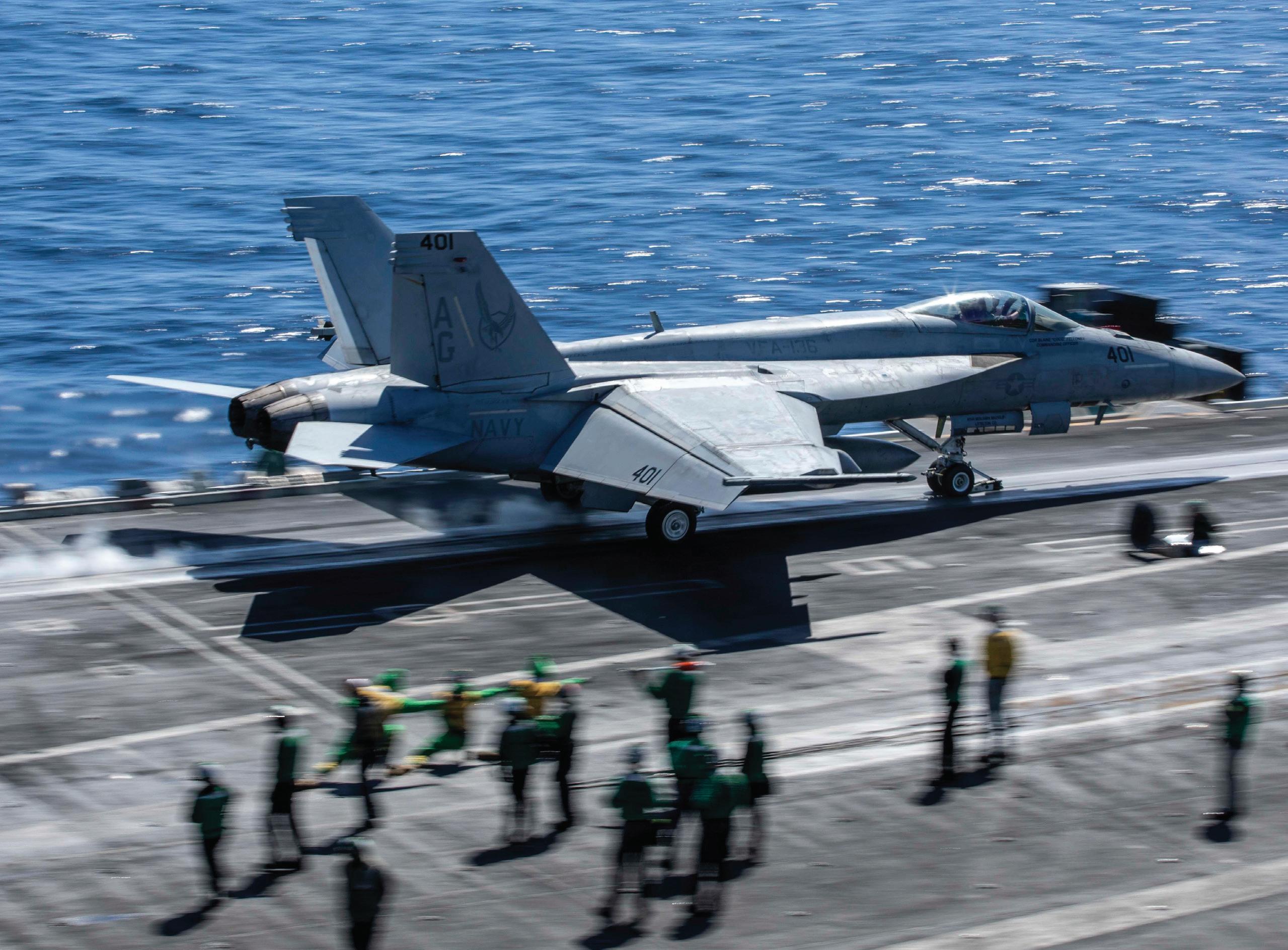
1 minute read
Team Jackpot: Reinforcing a Culture
By USS George H. W. Bush (CVN 77) Public Affairs
USS George H.W. Bush (CVN 77) and Carrier Air Wing (CVW) 7 – Team Jackpot (77+7) made strides in a performance campaign to drive warfighting readiness and reinforce a culture of self-assessment and improvement with safety and procedural compliance at the core while deployed in the Naval Forces Europe-Africa area of operations.
The 2nd Quarter Performance Campaign Plan - started during the second quarter of the ship’s regularly scheduled deployment - is a sports analogy that references the need to make critical, in-game assessments of performance that further enable planning, briefing and operational execution. The best teams are those that rapidly assess, learn, adapt and grow as a team more quickly than their opponents. Leadership recognized that there was no requirement to wait for an artificial deadline like halftime, and so the team started the concerted effort in the second quarter of the deployment.
“The best teams in any competition are able to critically self-assess in stride to make the small changes required to excel in the second half of the game,” said Capt. Dave Pollard, commanding officer of George H.W. Bush. “Our combined teams perform at a higher level than any World Cup or Super Bowl winning team, and to keep our warfighting edges sharp, this ongoing effort is essential.”
The performance campaign plan is led by Cmdr. Dylan Beyer, the ship’s safety officer, and Lt. Cmdr. Daniel Landerholm, the air wing safety officer. Although more than 70% of the carrier’s crew is comprised of first-term Sailors, the leadership team embarked aboard the ship recognized that Sailors are adapting well to deployment routines. Steady routines in complex aircraft carrier operations, maintenance, and safety can morph into complacency, increasing risk and degrading readiness. The aim of the performance campaign plan is not only to keep individual Sailors focused, but to develop a culture where Sailors do not normalize deviation from established standards and procedures, while completing continuous and rigorous self and team assessment.
Complacency commonly shows up in the adoption of shortcuts and workarounds that deviate—apparently harmlessly—from safe practices and procedures. These micro-deviations lined up across multiple Sailors’ routines and create what is often termed the Swiss-cheese model, whereby a series of seemingly small deviations lead to a mishap.
“The work Sailors do below decks, in the hangar, on the roof, and in our work centers around the ship, all have an impact on safety and operations,” said Beyer. “We’re taking a critical look at processes and procedures that span the air wing and ship teams










